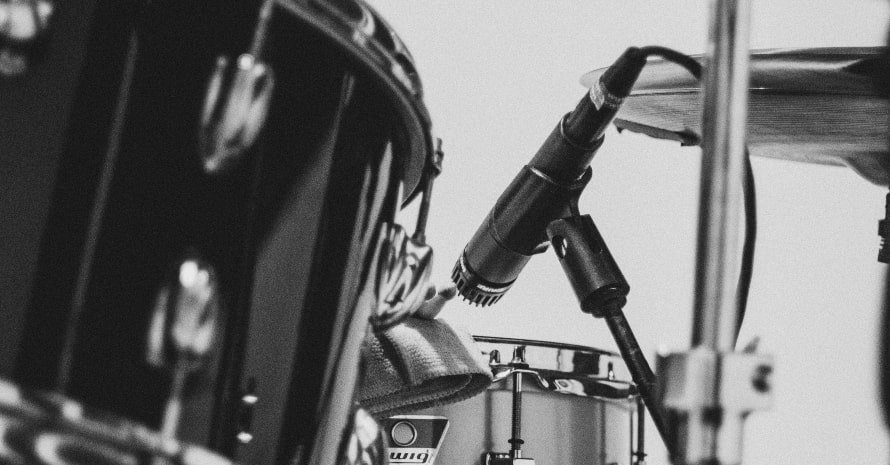
If you’re looking to get the best sound out of your drums, miking them is the way to go. Here’s what you need to know about miking drums.
The first thing to consider is what kind of sound you’re going for. If you want a natural, unprocessed sound, you’ll want to use dynamic microphones. If you’re going for a more polished, processed sound, you’ll want to use condenser microphones.
How to Mic Drums?
Contents
One of the challenges in recording drums is capturing all of the different sounds that the drums and cymbals produce. This can be accomplished by using a variety of microphones and techniques.
Recording drums with five or more microphones
The most important microphone for capturing the sound of the drums is the kick drum mic. This mic should be placed inside the kick drum, pointing towards the beater. It is important to experiment with the placement of this mic to find the sweet spot that gives you the sound you are looking for.
The next most important mic is the snare drum mic. This mic should be placed just above the rim of the snare drum, pointing towards the center of the drum. Again, experimentation with placement will yield the best results.
The third mic that is essential for a great drum sound is the overhead mic. This mic should be placed above the drum set, pointing down towards the drums. This will capture the overall sound of the drums and cymbals.
In addition to these three essential mics, you may also want to use a mic on the hi-hat and one or two mics on the tom-toms. These mics can be placed anywhere that gives you the sound you want.

Drum overhead mic placement is critical for getting a great drum sound.
When placing drum overhead mics, it’s important to keep in mind the phase relationship between the mics. You want to avoid placing the mics so that they are pointing directly at each other, as this will cause phase cancellation and result in a thin, weak sound.
Recording drums with four mic
Recording drums with four microphones can provide a full, rich sound that captures all the subtle nuances of the performance.
4 mic drum setup, will allow you to get a full, rich sound, conveying all the nuances of performance.
Here are some tips on where to place the microphones to get the best results:
- The kick drum should be a microphone with a dynamic mic placed just inside the drum, pointing towards the beater.
- For the snare drum, place a mic just above and slightly off to the side of the drum, pointing down towards the center of the drum.
- Position a mic just above and in front of the hi-hat, pointing down towards the hats.
- Finally, place a mic several feet away from the kit, pointing towards the center of the drum set. This will capture the overall sound of the drums.
Recording drums with one mic
First, you’ll need to find a microphone that can capture the low-end frequencies of the drums. A good condenser microphone will usually do the trick. Once you have your microphone, you’ll need to position it in front of the drums, pointing towards the center of the drum kit.
It’s important to experiment with the positioning of the microphone until you find a sound that you’re happy with. You may need to move the microphone around until you find the perfect spot. Once you’ve found the right position, you can begin recording.

One microphone isn’t going to give you the same sound as a multi-microphone setup, but with a little patience and experimentation, you can still get great results.
FAQ
What are the best microphones for miking drums?
The best microphones for miking drums are generally large diaphragm condenser microphones. These microphones can capture the low frequencies that are produced by the drums, as well as the high frequencies produced by the cymbals.
What are some common problems when miking drums?
The most common problems when miking drums are bleeding and phase issues. Bleed is when other instruments are picked up by the drum mic, and phase issues occur when the mic picks up sound from the drum at different times, causing a comb filter effect.
What are the best techniques for miking drums?
For example, if you are miking a snare drum, you might want to use a dynamic microphone placed close to the drum to capture its snap. If you are miking a kick drum, you might want to use a microphone with a bass roll-off to avoid capturing too much low-end rumble.
Conclusion
To miking your drumming, the main thing you need to remember is that you need to keep the sound as natural as possible. The best way to do this is to use a microphone that can pick up all of the frequencies being produced by the drum and then use a filter to remove the
frequencies that are not needed.
Nowadays mic techniques have a wide range of choices and you will find one that suits you.

